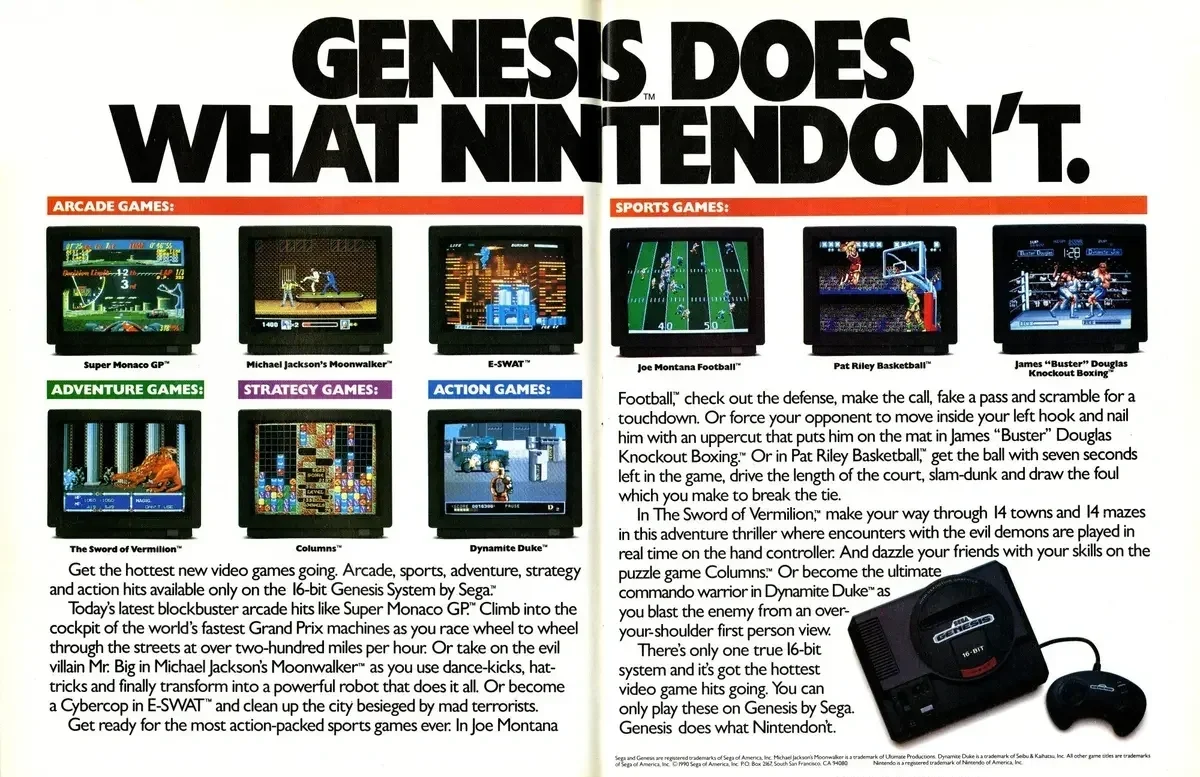The Al Nilsen interview. Marketing Sega in the 90s…
Sega’s former Head of Global Marketing talks Genesis, Japanese imports and blue hedgehogs…
Al Nilsen is the guy who made Sega cool.
Joining the company in 1989 he was responsible for some of the 16bit era's most memorable campaigns including Sonic 2sday and the iconic Genesis does… what Nintendon’t.
In the process, he helped take Sega from also-ran to the number-one selling console manufacturer in the US. You can read more about his adventures in Console Wars, an excellent book by Blake Harris. Or check his LinkedIn, which is surprisingly thorough…
But all you really need to know is that Al Nilsen is the guy who made Sega cool. So it was a real privilege to speak with him about the company’s relationship with magazines and the media back in the day.
What was the relationship like between Sega and the various US magazines on the market? How closely did you work together? I assume they were receptive to having a new platform on the market and someone to challenge Nintendo’s ageing system?
“We were in regular contact with the magazines. From getting them review copies, to pitching stories and answering questions. We also worked hard to get them to feature our titles on their covers. Most of the contact was by phone, but occasionally they came to Sega, and vice versa. When we arrived on the scene in 1989 they were very happy to have a new competitor to Nintendo. This was because they had a difficult relationship with Nintendo, who seemed to prioritise Nintendo Power.”
Which magazines were the key players back in the day and did you see them as having specific audiences? For example, did the messaging or games you were promoting vary much between GamePro, EGM and VG&CE?
“While we worked with all of the magazines, VG&CE, EGM and GamePro were the big three. Each had a slightly different audience and focus. EGM was more hardcore gamers. GamePro appealed to gamers of all ages and game interests. VG&CE was in the middle. As a result we tailored our messaging slightly differently for each magazine.”
What about the reviews? How much impact on games sales did they have, and did you feel the magazines were fair with their scoring? Was there ever a situation where you had to call an editor and ask for a “please explain”?
“Reviews were very important. A great review could immediately impact sales and rentals. They caused people to talk about the games at school, at work, etc. Overall I think the scoring was fair, but as expected, the magazines didn’t always like the same thing in a game. But that’s how reviews work, whether it was games, movies, music, etc. Occasionally I would call up an editor, not to complain, but to better understand why they didn’t like something. And the editors seemed to welcome this. One editor would even Fedex me a copy of each issue and call me up to see what I thought.”
How did you decide which games would get a big push in magazines? I assume some games were more obviously ‘hit material’ than others.
“We wanted all of our games to be reviewed, but we did emphasise games that we thought had a higher volume potential. This was based upon our internal review that included many different factors. Gameplay quality, license or character appeal, new title or sequel, innovation, fun, genre, competition, target market, and more. This helped us decide which games got TV ads, print ads, how much money we spent on advertising them, special promotions, magazine previews, pushing for magazine covers, etc.”
Did you have much insight into overseas markets like the UK and Europe? I assume the marketing and messaging was entirely separate? What did you think of their efforts promoting the Sega brand?
“We met regularly with our colleagues in Japan and Europe. We saw their ads, and we visited local stores to see how the games were being sold. I also received copies of all of the game magazines from the different countries. It was interesting to see how games were being marketed, and they may have sparked some ideas. Sonic 2 was the first game where we closely worked together with our international partners, since it was designed to be a simultaneous global launch. We shared plans and artwork and materials with each other. We had schedules that outlined what information would be shared with the media, and when. For example, which screenshots would be released, and on what date. We wanted the same information to be released at the same time around the world. We also coordinated when we would release review copies.”
This article originally appeared in Forgotten Worlds issue 6.



